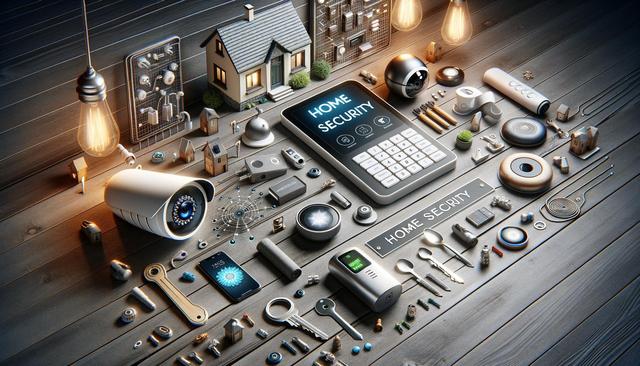Understanding the Importance of Home Security
Home protection is more than just a modern convenience—it’s a necessity. With rising concerns about safety, homeowners are increasingly turning to home security systems to provide peace of mind. These systems serve as both a deterrent and a response mechanism to potential threats. Whether you’re living in a bustling city or a quiet suburb, a reliable security setup can significantly reduce the risk of break-ins and property damage. Today’s technology allows for a variety of solutions, including wireless home security that minimizes installation hassle and offers flexibility for renters and homeowners alike.
The need for security can vary depending on the type of residence and neighborhood. It’s essential to assess your environment and understand what features are most useful. For instance, smart home security systems can integrate with your phone, allowing real-time monitoring and alerts. This feature is particularly valuable for frequent travelers or those who spend extended periods away from home.
Exploring Types of Home Security Systems
There are several categories of home security systems to explore, each with its own set of benefits. From traditional wired setups to more modern wireless home security options, the variety allows users to choose what fits their lifestyle and budget. Wireless systems are growing in popularity due to their ease of installation and portability.
Common components of these systems include:
- Door and window sensors
- Motion detectors
- Glass break sensors
- Control panels and keypads
- Home security cameras
Each component plays a role in creating a layered defense system. Additionally, many of the best alarm systems offer mobile app integration, giving homeowners the ability to monitor their homes remotely. This functionality adds a level of convenience and control that was not possible with older systems.
Smart Features and Home Integration
Smart home security is becoming a standard for many households. These systems often include features like voice control, geofencing, and automation. Devices can be linked with lighting systems, smart locks, and thermostats, allowing for a more holistic approach to home management and safety.
Benefits of smart integration include:
- Automated arming and disarming based on your location
- Real-time notifications and video feeds
- Customizable settings for different times of day or family members
With these smart features, homeowners can create personalized routines that enhance both security and energy efficiency. A home security camera with smart capabilities can distinguish between a pet and an actual intruder, reducing false alarms and increasing reliability.
DIY vs. Professional Installation Options
When choosing a security system, one of the first decisions to make is whether to go for a DIY home security setup or a professionally installed system. DIY options have become increasingly robust, offering easy-to-follow instructions and customer support.
Advantages of DIY systems include:
- Lower upfront and installation costs
- Custom setup tailored to your specific needs
- Flexibility to add or remove devices over time
However, professionally installed systems may offer more comprehensive solutions and around-the-clock monitoring. They often include setup assistance and ongoing technical support. The decision ultimately depends on your comfort level with technology, budget, and the complexity of the security system you want.
Cost Considerations and Finding the Right Fit
Affordability is a key factor for many homeowners when selecting a security solution. Fortunately, there are a range of affordable home security options that don’t compromise on features. From basic packages with a few sensors and a camera to more advanced systems with full automation, there’s something for nearly every budget.
When evaluating cost, consider:
- Initial equipment purchase
- Installation costs (if any)
- Monthly monitoring fees
- Ongoing maintenance or upgrades
Some systems offer no-contract plans, which can be ideal for those who prefer flexibility. Others might include long-term subscriptions with discounted hardware. Comparing these aspects can help you find a solution that offers robust features without exceeding your financial limits.
Conclusion: Making Your Home Safer with Smart Choices
Creating a secure home environment doesn’t have to be complicated or expensive. Whether you prefer smart home security systems, a simple DIY home security kit, or a more comprehensive setup with professional monitoring, the options available today make it easier than ever to protect what matters most. By understanding your needs and evaluating available technologies—such as wireless home security and affordable home security packages—you can make informed decisions that enhance safety and provide peace of mind. Investing in a dependable home security camera, integrating smart features, and choosing the right type of alarm system can collectively lead to a safer, more comfortable living space for you and your family.




Leave a Reply